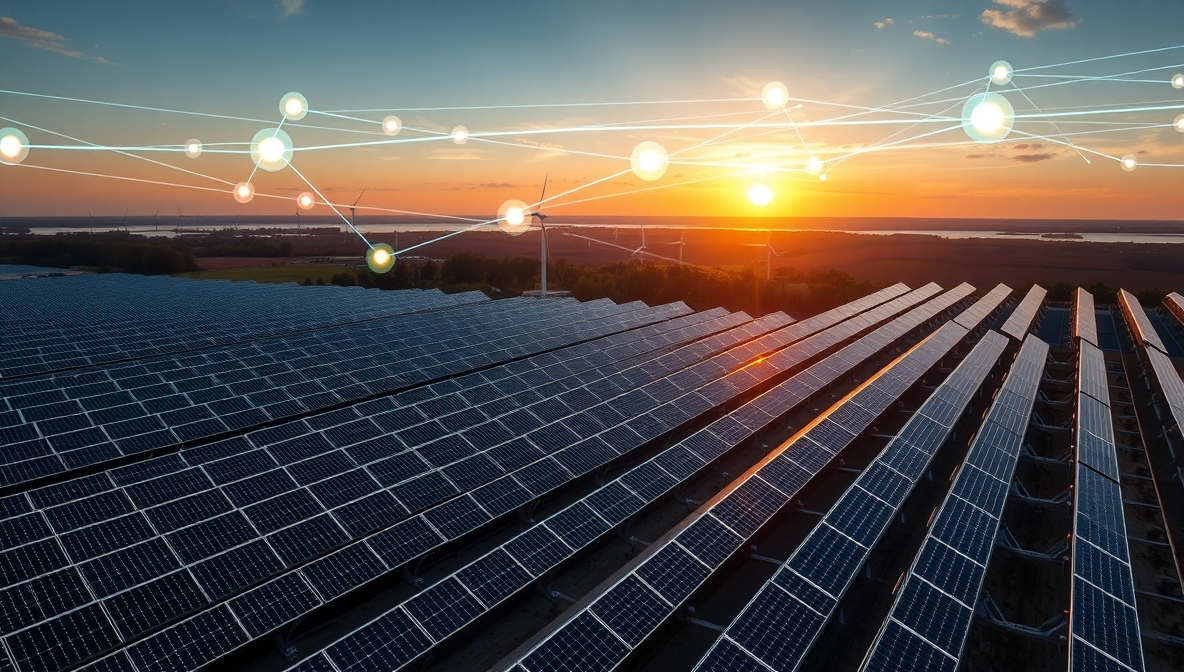
We live a comfortable life with the conveniences of electricity, but what if that all came to a halt? Electricity is mainly run by burning fossil fuels and coal, both limited resources with fossil fuel expected to run out in this century1. On top of that, using fossil fuels and coal for electricity contributes to climate change, causing 25% of the greenhouse gas emissions in 20212.
Greenhouse gases trap heat on Earth, contributing to severe weather and natural disasters such as drought, hurricanes, and wildfires that can cause trillions of dollars in damage and pose dangers to human health3. This makes finding an alternative source of renewable and clean energy vital. A possible solution? Solar power.
Solar energy does not produce greenhouse gases or carbon emissions in generating electricity4, and enough solar power travels from the sun and reaches the Earth every hour to support our planet’s power needs for an entire year5. So why hasn’t this clean source of energy replaced fossil fuels yet?
The Challenges of Adopting Solar Energy
Efficiently and effectively harnessing this all-natural, completely renewable power can be challenging. Rapid expansion and widespread adoption of solar energy are slowed by challenges around grid scaling, the high costs of constructing solar systems and farms, and integration with the existing grid.
Researchers, utilities, startups, and governments are exploring ways to expand solar’s impact with the help of emerging technologies like artificial intelligence (AI). Here, we’ll look at a few ways AI is already accelerating solar energy expansion.
Solar Site Selection
Environmental conditions can significantly affect solar production and storage capabilities. Each individual solar system project presents various challenges unique to the geography and location.
By analyzing large amounts of environmental and geographical data, AI can help energy companies identify locations and sites that provide the best solar conditions and resources. AI can also find ideal positioning for later continued development and verify the ease of access for connection with existing grid systems.
As one example, Airworks Automate6 helps governments, energy providers, and land developers identify ideal sites for solar farms and accelerate their development with the help of AI AirWorks’ AI algorithms process and train thousands of acres of geospatial data at varying GSD levels. Their models can process data from sources like drones, aircraft, and LiDAR to deliver site plans that clients can use to manage their projects.
Solar Energy Performance
Because clouds, timing, and planet position can affect the levels of solar power that reach the Earth, solar farms and systems run into problems around weather or mismatches in supply and demand. Sudden cloud cover, for example, can cause a noticeable dip in solar power generation, so grid operators lean on fossil fuel plants to overproduce energy as a backup. AI can analyze vast quantities of environmental data consistently and constantly, improving forecasting accuracy and providing real-time adjustments to new and changing conditions.
In the U.K., the National Grid Electricity System Operator (ESO), which operates the country’s electricity system, is partnering with the nonprofit Open Climate Fix to build an AI-powered tracking system that matches cloud movements with the exact locations of solar panels7. To be used in the national control room, the system will help ESO forecast cloud movements in hours and minutes instead of days. This could potentially improve solar forecasting accuracy by up to 50%. With better forecasts, ESO could reduce the fossil fuel energy held in reserve — improving efficiency while cutting carbon emissions.

Grid Integration
Integrating solar systems into existing energy grids can be a complicated endeavor. Because the electricity generated by solar power is intermittent, it’s critical to carefully consider and plan energy storage and supply needs to avoid service disruptions or grid outages. Solar system integration is a crucial element in reducing reliance on fossil fuels and cutting carbon emissions,
Accurate solar power generation predictions improve forecasting and production uptime and help expand energy systems and storage. AI can accurately assess and analyze huge quantities of complex data and use predictive abilities to suggest innovative alternative options, making it a valuable technology for integration.
The traditional power grid has a unidirectional power flow and information transfer, which limits its capacity for scalability, efficiency, and renewable energy integration. Companies are developing smart grids (S.G.s) as more intelligent power grids with bidirectional power flow and information interchange.
BluWave-ai’s Solar Predictor, part of its Smart Grid Optimizer, offers utilities precise solar generation forecasts by combining rules-based modeling of equipment specifications, weather observations, and projections with time series machine learning predictions8. The Solar Predictor accurately predicts solar generation based on historical data, weather patterns, and other relevant factors. This capability enables energy providers to enhance the utilization of solar assets, plan energy distribution, and make informed decisions for sustainable grid management.
The Bright Future of AI and Solar
The convergence of AI and solar — two powerful emerging technologies — is already having a real-world impact on the transition to a cleaner energy economy. As both technologies continue to evolve, that impact will likely expand exponentially. By amplifying solar’s role in the world’s existing power grids, AI can help utilities and governments reduce the costs of electricity generation and achieve global goals of net-zero emissions by 2050.
How Ambiq is Contributing
AI is a power-hungry task, and creating sustainable energy such as a solar site with power-hungry devices is counterintuitive. At Ambiq, we’re obsessed with energy and sustainability. We enable connected edge devices capable of AI to run longer on a single charge of their battery by dropping the energy consumption up to 10X lower than anything on the market.
Through our use of ultra-low power system-on-chips (SoCs) and our patented Sub-threshold Power Optimized Technology (SPOT®) platform, we will reduce our carbon footprint by empowering millions of smart sensors and meters like the ones used to identify solar sites. We will help create green energy using green energy devices.
References
1 When will we run out of fossil fuels? | FairPlanet | April 30, 2023
2 Sources of Greenhouse Gas Emissions | US EPA | October 5, 2023
3 5 things you should know about the greenhouse gases warming the planet | UN News | January 8, 2022
4 The Promise Of Solar Energy: A Low-Carbon Energy Strategy For The 21st Century | United Nations | 2007
5 Solar Energy Facts and Stats Every Homeowner Should Know | April 19, 2023
6 Airworks | 2023
7 Sun in Their AIs: Nonprofit Forecasts Solar Energy for UK Grid | February 24, 2023
8 BluWave-ai | 2023


